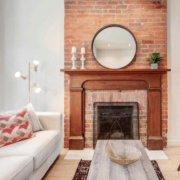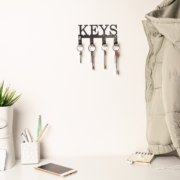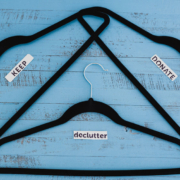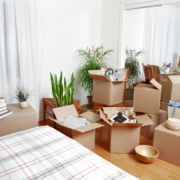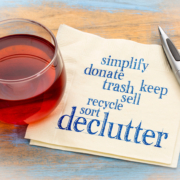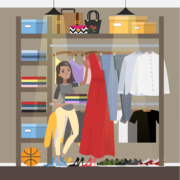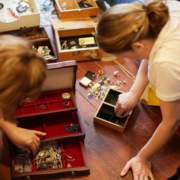Preparing Your Home for Sale: Maximize Price, Minimize Stress
You’ve decided to sell your home, which is a big decision. As with any big life decision, there are many follow up decisions that need to be made in order for the sale & move to be successful. These follow up decisions can feel very overwhelming, very quickly.
“Where do I start?”, “What do I have to do, and in what order?” and “How do I get the highest price for my home?” are some common questions sellers have.
The good news is we’ve put together a 10-Step Guide to Prepare Your Home for Sale – – for the highest selling price possible.
1.Free at-home Consultation
Your first step is to book our free at-home consultation. We will help you understand the full scope of your project, by assessing your home, providing a written estimate, and then a comprehensive plan & suggested next steps.
Our team at Simply Home Downsizing understands the complexities involved in preparing your home for sale. By choosing a full-service company such as ours, you can minimize the stress of managing multiple service providers. We provide personalized, non-judgmental, friendly support to ensure you feel clear, comfortable, and ready to take your next steps.
2. Deciding What to Keep/Sell/Donate/Toss or Recycle
Once you know what your plan is, it’s time to make some decisions. Often, selling & moving presents an opportunity for us to take stock of what we have, and what we want to keep moving forward. The process of deciding can be challenging. Emotions often run high when working through what to keep, let go of, sell, donate, and recycle.
At Simply Home Downsizing, we use a personalized, proven, and efficient system to help you make these decisions more intentionally, supporting you at every step along the way. We take the pressure off your decision-making and encourage you to make choices that align with how you want to live.
We also coordinate the timely removal of all unwanted items from your home, this includes donations, furniture, garbage, recycling, toxic waste, and electronic waste.
Trust us when we say that the effort and decision-making you do upfront, will positively impact the results at the other end of your home-selling journey – it’s worth it! For tips & tricks read Ready to Declutter Your Home?
3. Conduct an Online Auction for Unwanted Items
When you realize you have items of value that you don’t need or want in your new home, selling them online is a viable option. Online platforms, such as MaxSold enable sellers to showcase their items online for a fixed amount of time. Interested buyers bid on these items until the auction closes. Once closed, the highest bidder “wins” and then pays online. They will then pick up the items at the seller’s home during a one-day “pick-up day”.
As you can imagine, preparing an online auction takes time, effort and expertise. Making time to prepare items to sell is not always a realistic option for sellers, so at Simply Home Downsizing, we do it for you! Our experienced team can manage all aspects of an online auction. From organizing & creating lots, overseeing the online process, pick-up day, to the final follow up. Want to know more? How Online Auctions Can Help
4. Packing for Short-term and Long-term Storage
Once you know what you are keeping, it is time to coordinate packing and storing your items. After determining what items will remain in your home during the staging process, it is time to pack up and store the items that are not needed for staging, but that you wish to keep.
At Simply Home Downsizing we can help you decide, and then coordinate this next step. Whether you are using a storage unit/locker or taking items to friends and family, we can pack, label, and coordinate delivery of your items to the right location.
5. Painting & Repairs
Now that your belongings have been sorted out, it is time to focus on the nuts and bolts of your home. As a full-service company, Simply Home Downsizing works directly with reliable and trustworthy painting and home repair professionals. We coordinate all aspects of the painting and home repair process, ensuring the work gets done properly and on time.
6. Cleaning and Carpet Steam-Cleaning
To prepare your home for staging, cleaning will be an essential step in the process. At Simply Home Downsizing, we work with a team of cleaning professionals who are thorough, responsible, and conscientious. We coordinate all aspects of the cleaning process, ensuring the work gets done properly and on time.
7. Staging
The next step in your preparation process is staging your home. At Simply Home Downsizing, our team of experts know exactly how to stage your home for the best possible selling outcome. Often, we work with your real estate agent to organize and manage this process.
The goal of staging is to present your home in the most enticing way to potential buyers. This often means moving select items out and bringing other items in that offer potential buyers that, “a-ha, I want to buy this home” moment.
Statistics show that home sales increase significantly when effective staging is used, so even though it can be challenging for some homeowners to agree to the staging choices, trust us when we say we know what works! We are masters at creating the conditions for selling your home at a higher price. How Important is Staging Your Home Before Selling?
8. Pack & Move Remaining Items to Your New Home
Once your home has been sold (and you are thrilled at the high selling price!), you are ready to move to your new home. At Simply Home Downsizing, we pack up all remaining items and move them to your new home. We can also coordinate the delivery of any items that are being kept in storage to your new home. Consider Hiring a Move Manager
9. Unpack & Organize Your New Home
You’re in your new home which can feel exciting…and a bit overwhelming because there are likely boxes everywhere! Simply Home Downsizing can unpack & organize your new home so that you can enjoy it with less delay and stress.
The benefit of having Simply Home Downsizing coordinate this step is that we already know you and your preferences – what you like, what your priorities are, what you use most/least. This knowledge allows us to be efficient, tactical and responsive to your needs.
10. Remove All Packing Materials
You’ve made it! You are in your new home and you love it. The last thing you want to do is deal with all of the empty boxes and packing material that is left over. Let Simply Home Downsizing take care of this for you! We can quickly remove all of these unnecessary items, freeing up your space so you can enjoy it more fully.
At Simply Home Downsizing, we know how exciting….and overwhelming it is to move. We are here to help you every step of the way and hope that this 10-step guide will help you prepare for a successful home sale and move.
Please Contact Us for a free at-home consultation or to ask any questions. Simply Home Downsizing 416-819-1576

